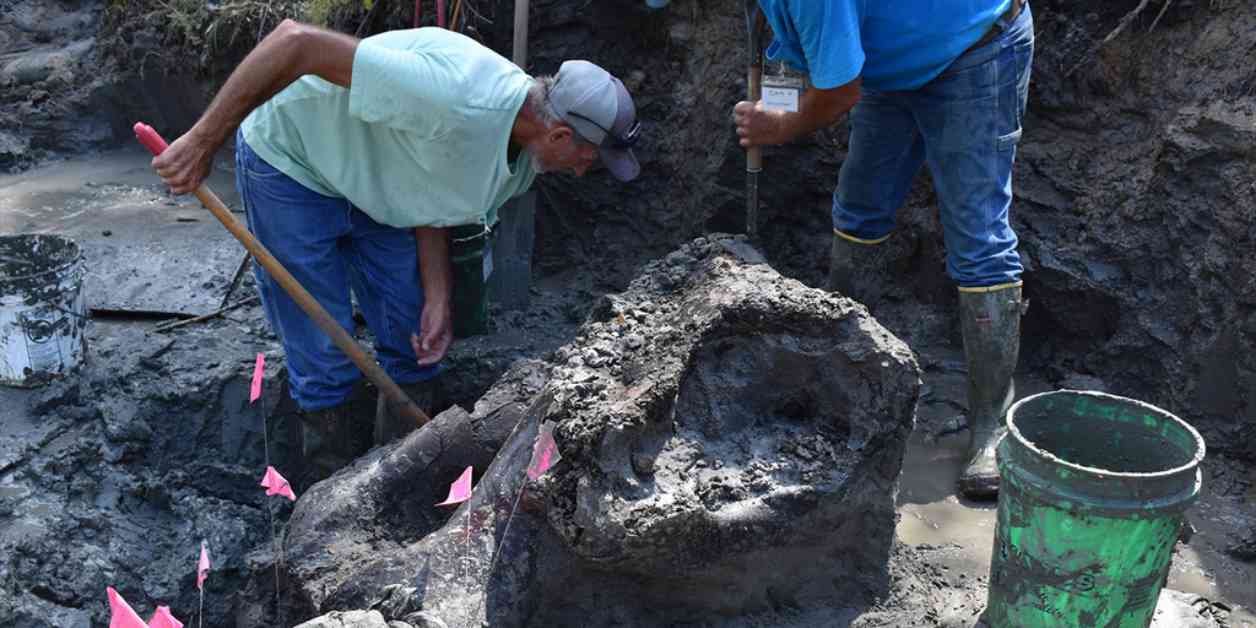Unearthing a Prehistoric Treasure in Iowa
In a thrilling discovery that has left archaeologists in Iowa buzzing with excitement, a 13,000-year-old mastodon skull has been unearthed in pristine condition. The find promises to shed light on the ancient interactions between humans and these majestic creatures that once roamed the North American continent.
The remarkable bones were excavated from a creek bank in Wayne over a period of nearly two weeks, a meticulous process that required patience and precision. The eroding site first came to the attention of the Office of the State Archaeologist, Iowa (OSA) in 2022, sparking a flurry of activity as experts raced to uncover the secrets hidden within the earth.
Delving into the Past with Radiocarbon Dating
Radiocarbon dating has provided a fascinating glimpse into the history of the mastodon skull, revealing that it is approximately 13,600 years old. This timeline coincides with the period when humans are known to have inhabited the region, raising intriguing questions about possible interactions between our ancient ancestors and these massive creatures.
OSA is now embarking on a detailed examination of the bones in search of clues that may hint at human involvement in the mastodon’s demise. Director and state archaeologist John Doershuk expressed optimism about the potential discoveries that lie ahead, stating, “We’re really hoping to find evidence of human interaction with this creature – perhaps the projectile points and knives that were used to kill the animal and do initial butchering. There’s also potential evidence on the bones themselves – there could be identifiable cut marks.”
A Glimpse into the World of Mastodons
Mastodons, ancient relatives of modern elephants, once roamed the vast landscapes of North America from approximately 3.5 million years ago until around 10,500 years ago. These massive mammals played a crucial role in the ecosystem, shaping the environment in which they lived and interacting with other species in complex ways.
The discovery of the mastodon skull in Iowa marks a significant milestone for archaeologists, who are thrilled to have the opportunity to study such a well-preserved specimen. Iowa Archaeology noted that this find represents the “first-ever well-preserved mastodon (primarily the skull) that has been excavated in Iowa,” underscoring the rarity and importance of this ancient treasure.
Preserving the Past for Future Generations
Following the meticulous excavation process, the mastodon bones will undergo conservation and analysis at the University of Iowa before becoming part of a new exhibit at the Prairie Trails Museum. This exhibit will offer visitors a unique opportunity to connect with the distant past, marveling at the sheer size and complexity of these prehistoric creatures that once roamed the land.
As the bones are carefully studied and interpreted, researchers hope to unlock the mysteries of human-mastodon interactions and gain a deeper understanding of the ancient ecosystems that shaped the world we know today. The discovery of the mastodon skull in Iowa serves as a poignant reminder of our shared history with the natural world and the importance of preserving these invaluable relics for future generations to appreciate and learn from.
In conclusion, the unearthing of the 13,000-year-old mastodon skull in Iowa has sparked a wave of excitement and intrigue among archaeologists and researchers. This remarkable find offers a rare glimpse into the ancient past, providing valuable insights into the interactions between humans and mastodons thousands of years ago. As the bones are carefully examined and prepared for display, the stage is set for a journey back in time, allowing us to connect with our prehistoric heritage in a profound and meaningful way.




